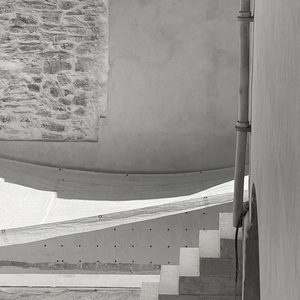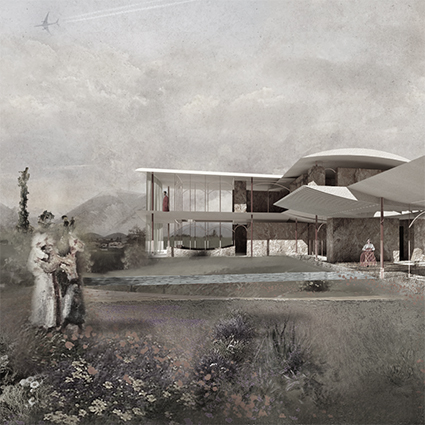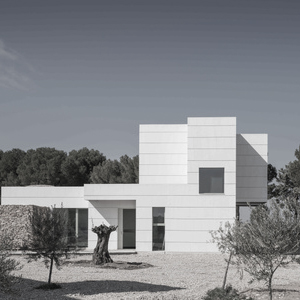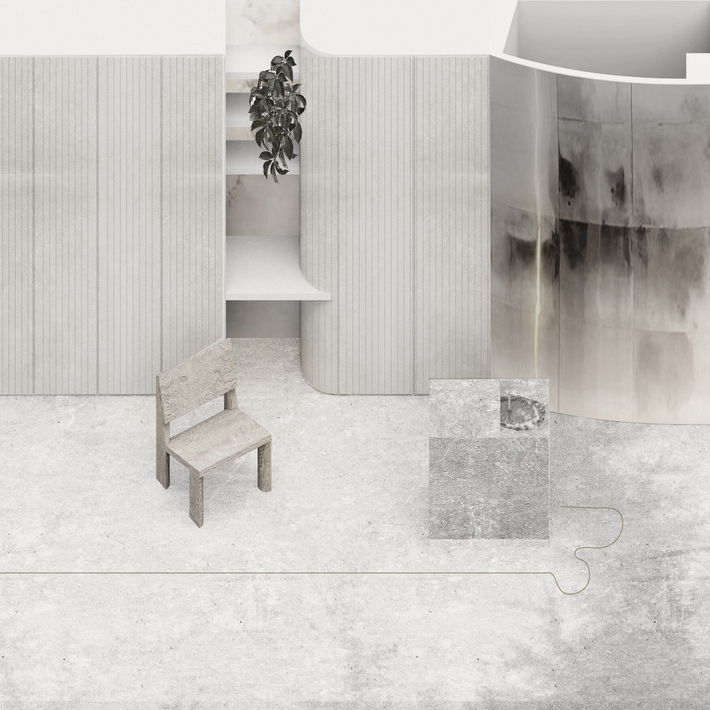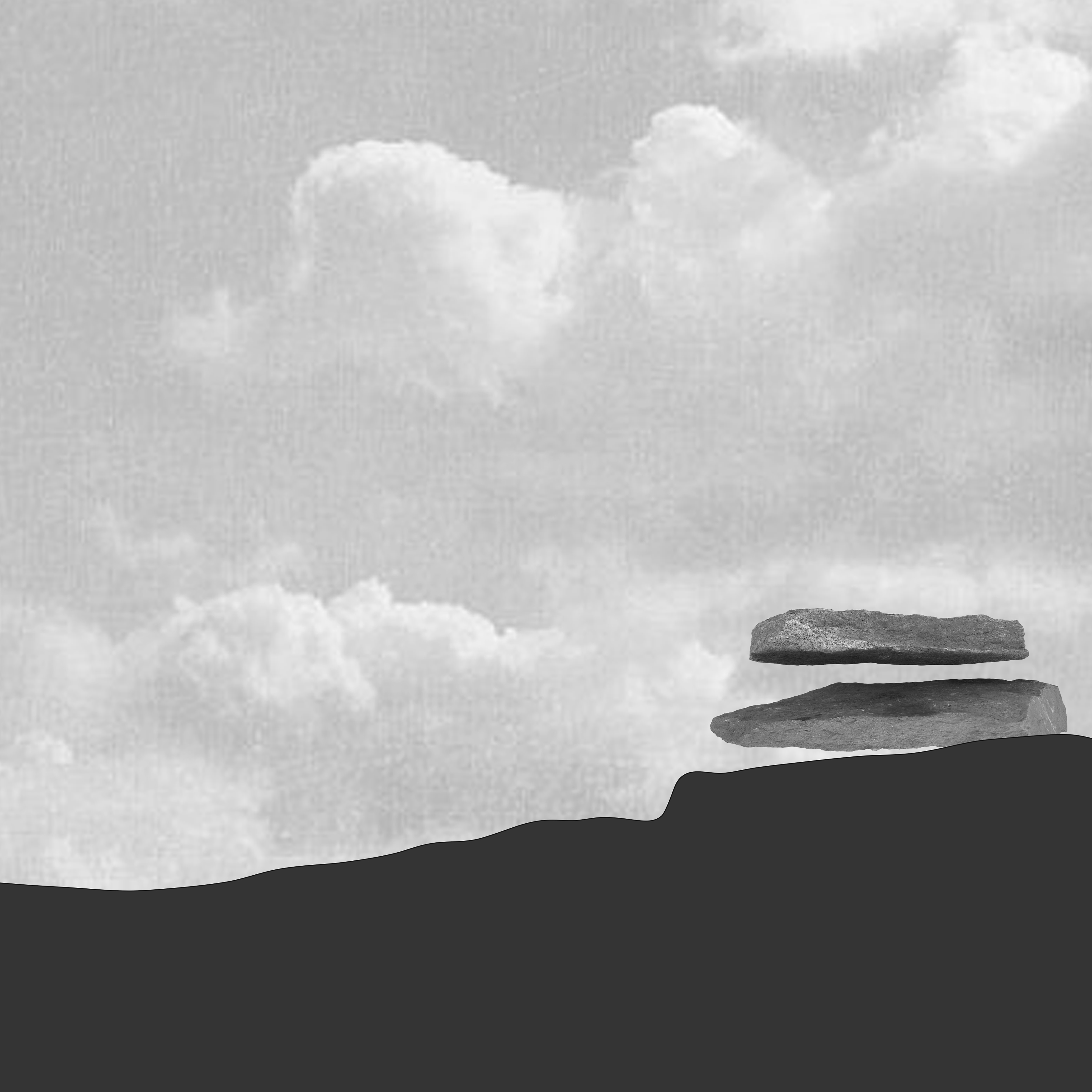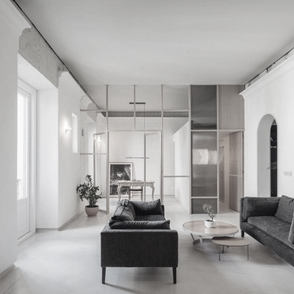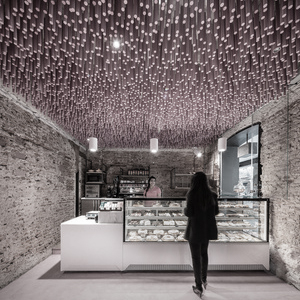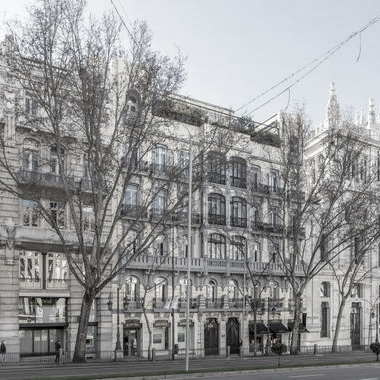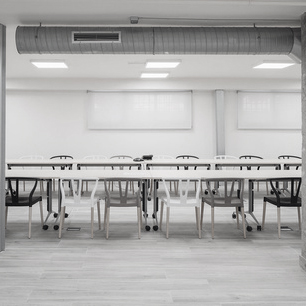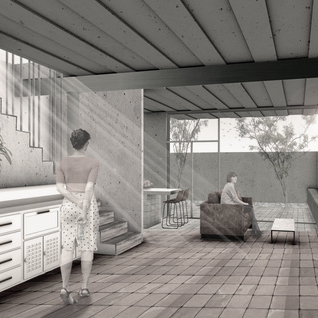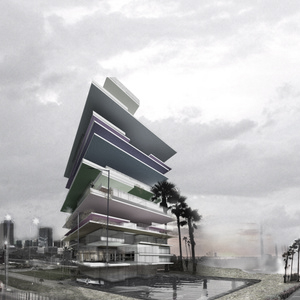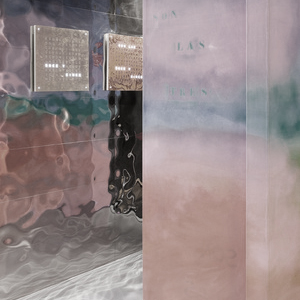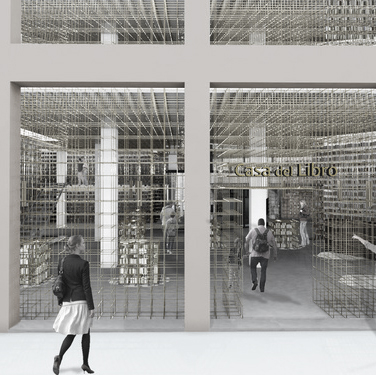Arquitecta: Virginia del Barco.
Año de proyecto: 2019.
Clientes:
Ximena Pastor y Eric Ortuño.
Superficie: 500 m2.
Localización: Calle Villadomat 140B, Barcelona.
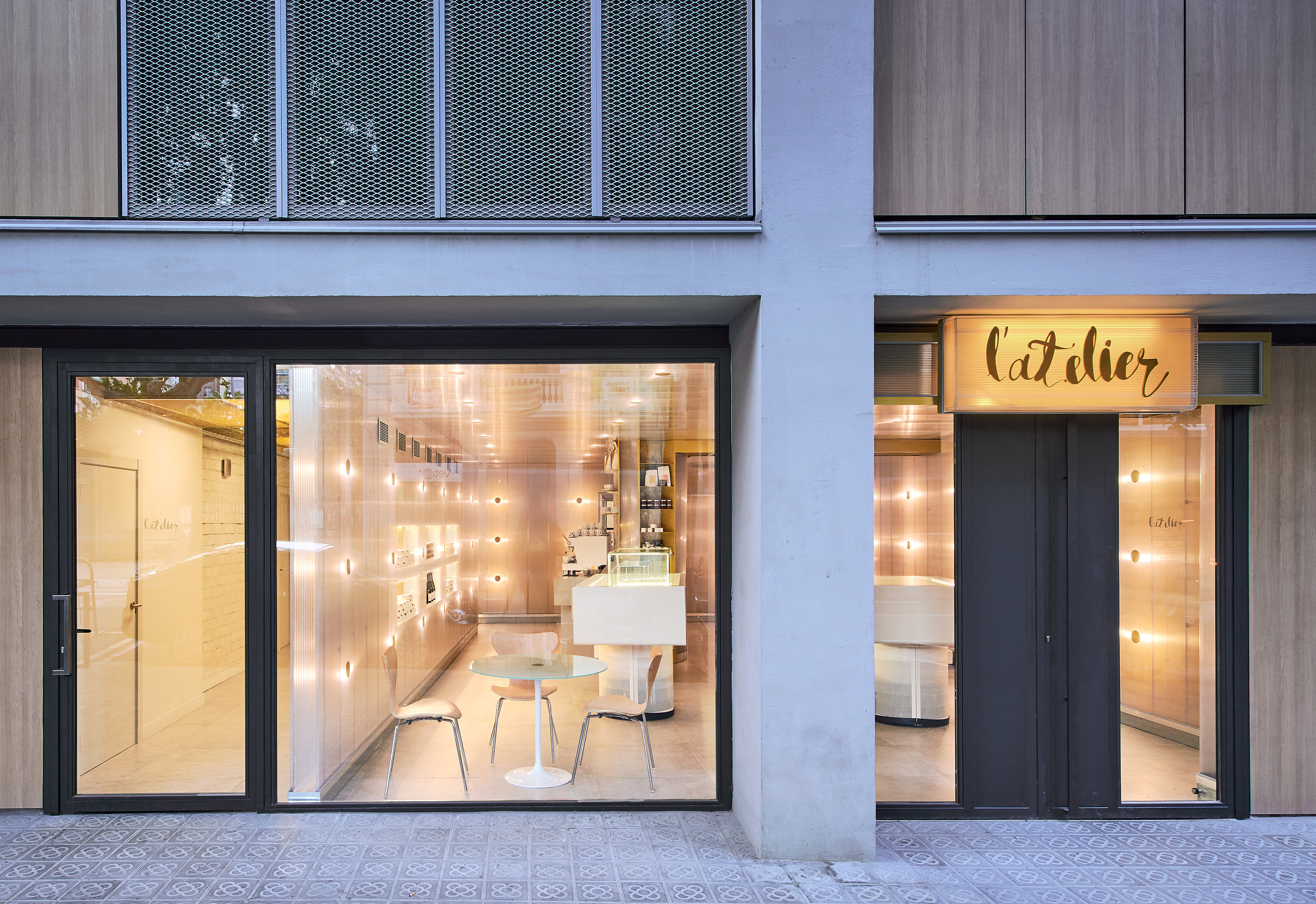
Dejar el local tal como lo encontramos, con sus imperfecciones e instalaciones a la vista, y cubriéndolo tan solo, con una delicada piel interior de cristal a modo de caja joya.
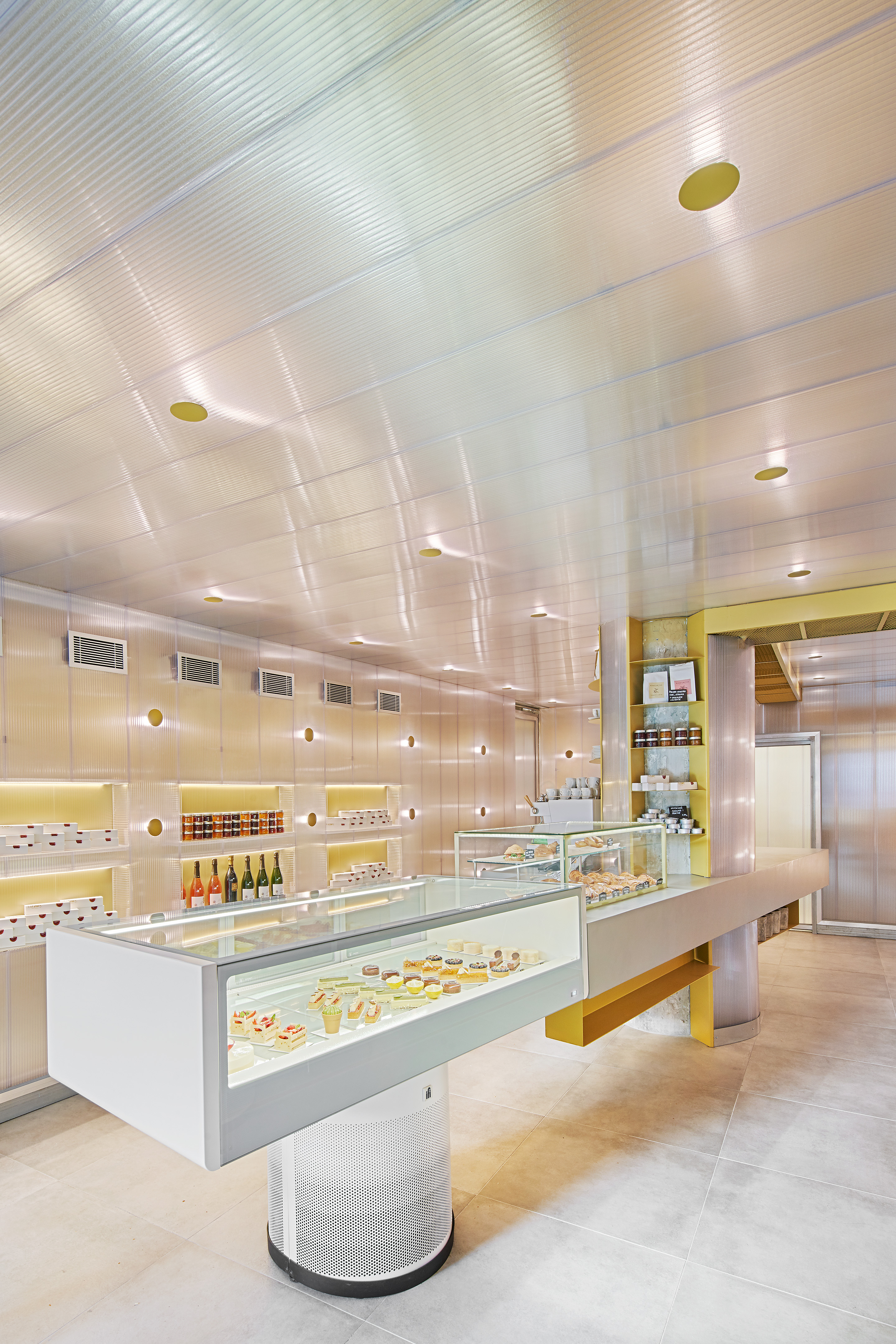
Ximena Pastor y Eric Ortuño, dos figuras relevantes de la alta pastelería, se ponen en contacto con nosotros con una idea clara; “buscamos un espacio rompedor, único y de vanguardia”. A partir de estas palabras clave debíamos transformar un local en bruto de 500 m2 en el Ensanche de Barcelona, en un nuevo espacio que se convirtiera en referencia del sector, siendo a la vez, escuela, obrador y pastelería.
Un atelier es un laboratorio donde experimentar con materias primas relacionadas con el arte. Estos espacios de trabajo son lugares que, normalmente, presentan una imagen desordenada, caótica y mágica.
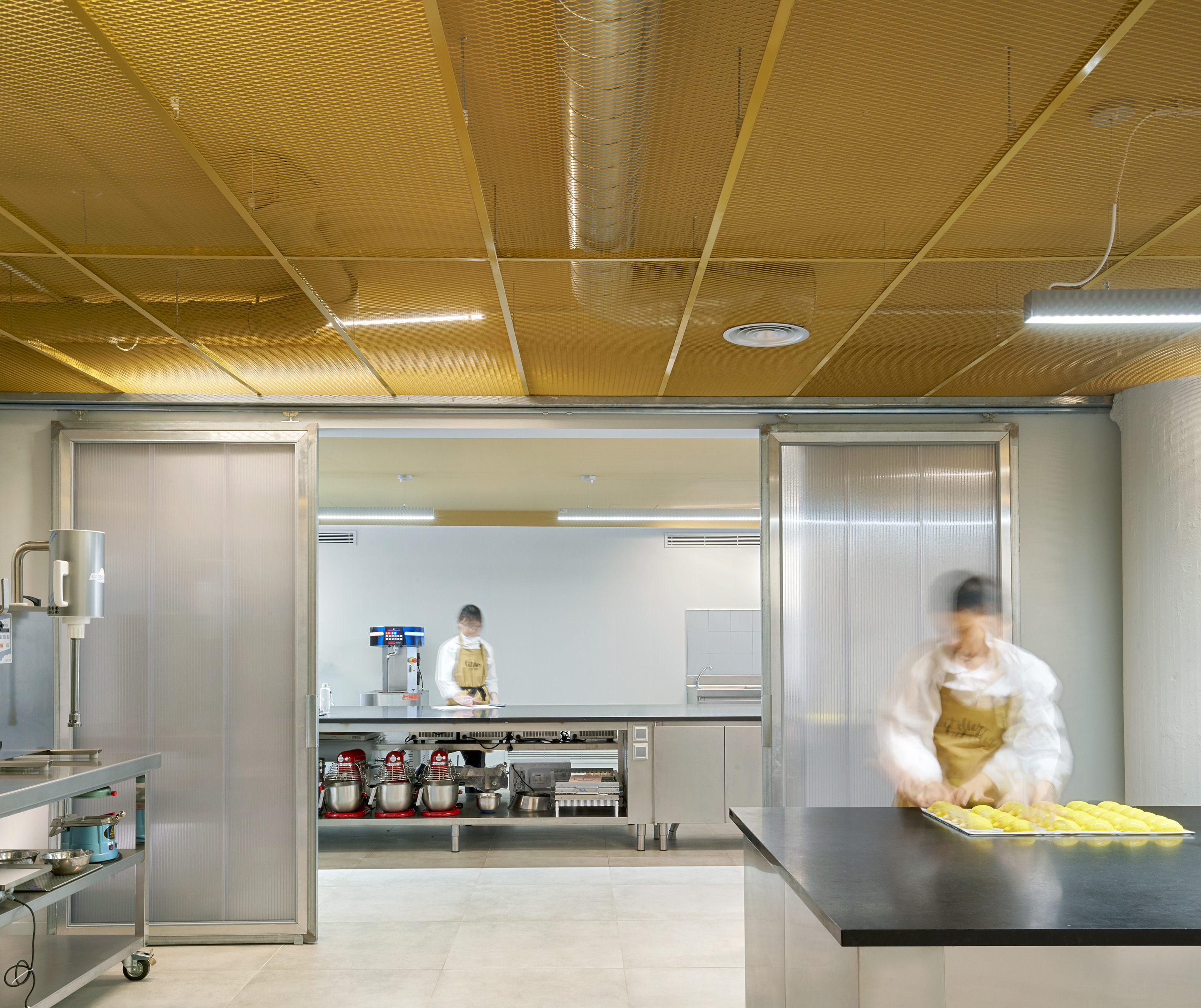
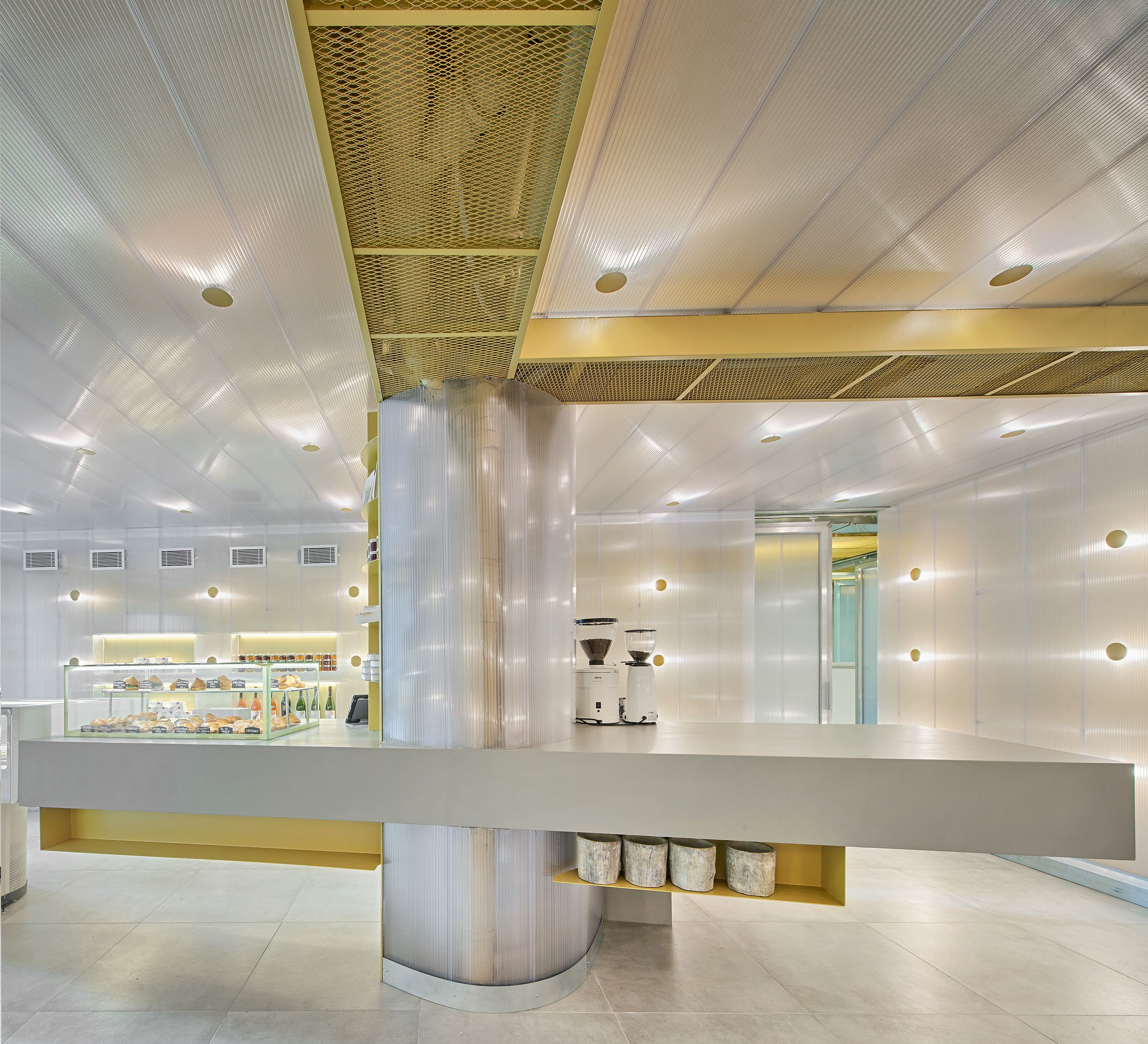
El nombre de L’atelier es una declaración de intenciones en sí. Eric y Ximena quieren enseñar al mundo su universo creativo, sin esconder nada. Entonces, ¿por qué no fusionar en un único espacio el caos del obrador con la perfección de la boutique pastelería?
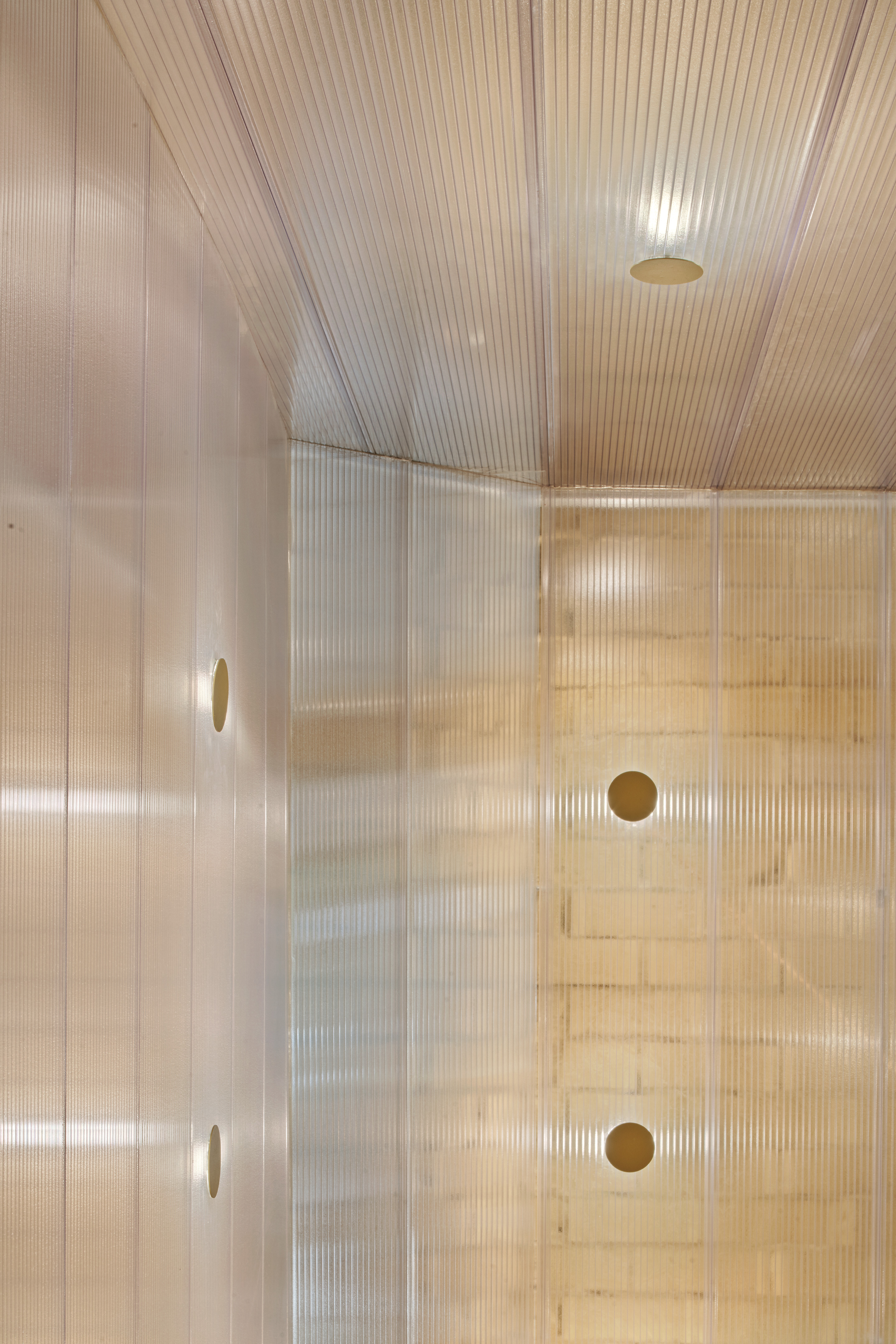
Así hicimos. Para ello, propusimos una idea arriesgada pero cautivadora. Dejar el local tal como lo encontramos, con sus imperfecciones e instalaciones a la vista, y cubriéndolo tan solo, con una delicada piel interior de cristal a modo de caja joya.
De este modo, dos mundos aparentemente contrarios quedan unidos en una doble piel arquitectónica; una piel existente, fabril y azarosa, y otra piel nueva, bella y delicada.
El mismo bloque de termoarcilla que forma los paramentos verticales, el forjado y columnas de hormigón visto, cableados, tuberías, bajantes, etc. quedan a la vista del cliente. No se esconden. Sin embargo, esta desnudez, algo hostil, se enfrentará a una envolvente interior pura y sofisticada. La construcción de una caja de vidrio transparente (joyero) separada 20 cm. de los paramentos del local, logrará convertir el pastel en una pequeña joya enmarcada en su vitrina.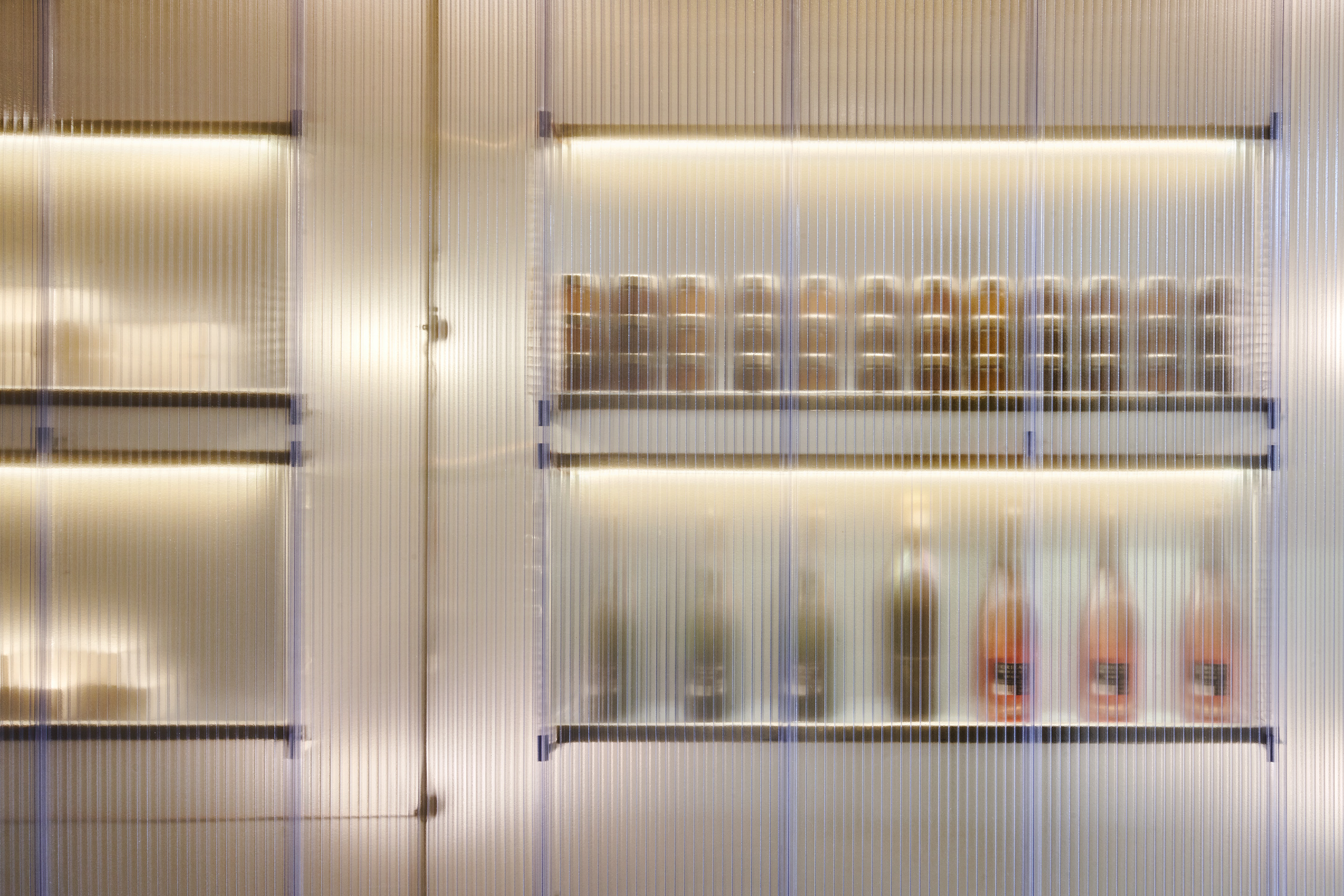
EL MATERIAL. Al cliente le entusiasmó la idea y ahora nos quedaba estudiar la viabilidad de su construcción. Llevar a cabo una caja de vidrio, tanto en paredes como en suelo y techo era excesivamente complicado. Finalmente encontramos una solución viable. En vez de vidrio, utilizaríamos un panel machihembrado de policarbonato semi transparente de 33 cm. de ancho, fácil de manipular y trabajar. Lo usamos también para definir las divisiones de la escuela. El resultado una vez ejecutado, deja ver los paramentos originales del local de un modo velado o difuso.
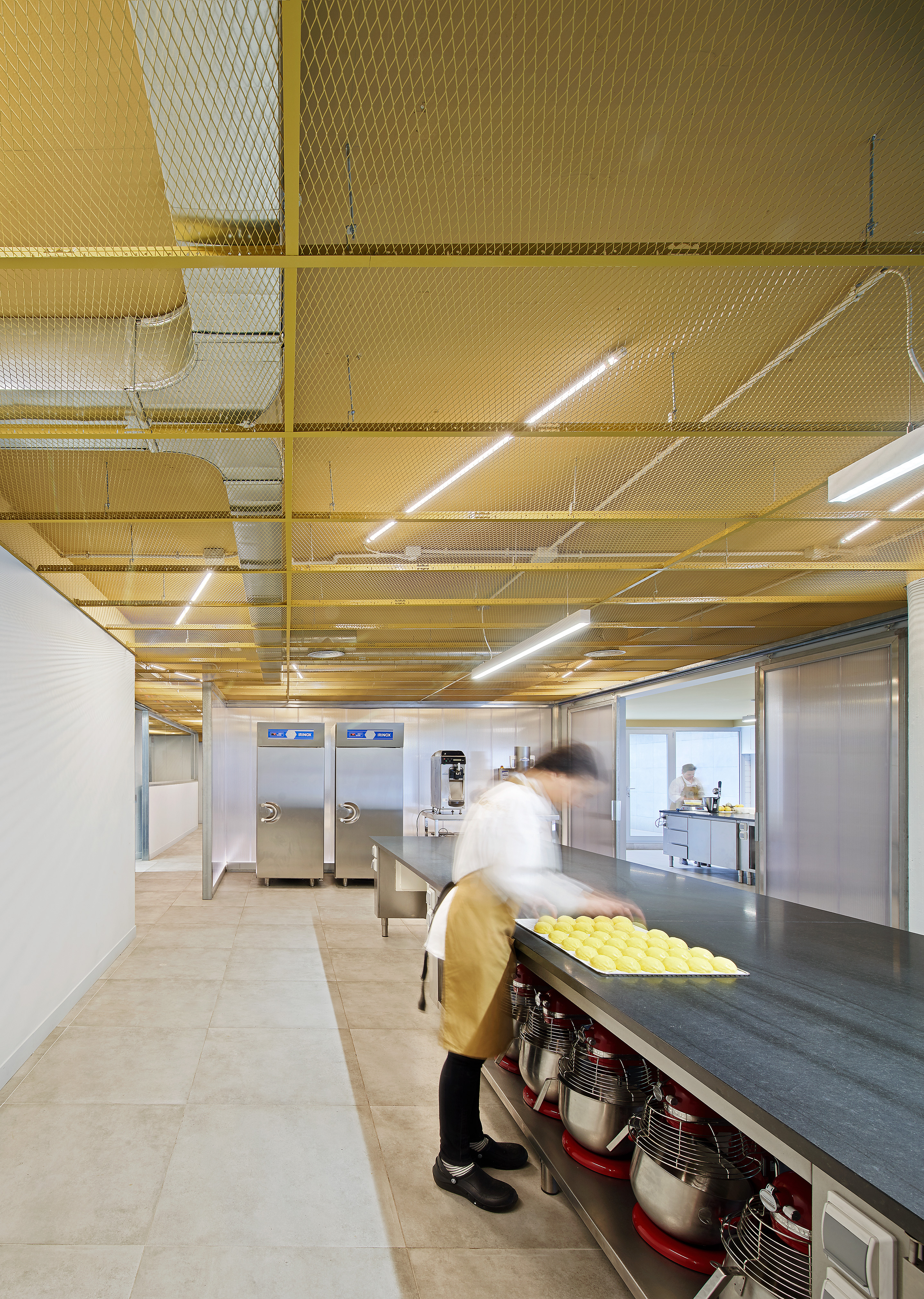
EL COLOR. Si queríamos llevar a las últimas consecuencias el concepto de pastel joya, la selección del color era trascendental. Optamos por la gama de oros, eligiendo finalmente el color PANTONE 118, un ocre con tintes de oro que responde mejor a la sobriedad del estilo de Eric Ortuño. En un primer paso, todos los paramentos de la pastelería se pintaron en este color, y tras colocar la segunda piel interior de policarbonato, esta se empapó inmediatamente de dicho color, transportando el ocre-oro del fondo a todo el espacio.
Para la parte de la escuela, puesto que no se colocó la segunda piel de policarbonato, se optó por una solución más sencilla. Dejamos los paramentos verticales en gris y dejamos una franja en el techo pintada en ocre. No teníamos mucha altura en el local y debíamos ampliar la sensación espacial de alguna manera, así que cambiamos la típica escayola continua por una rejilla calada de metal. La bañamos del mismo color ocre, con la intención de que la escuela se contagiara del espíritu de la pastelería.


Para la pastelería, el reto fue difícil puesto que al ser una caja completa de policarbonato, el mantenimiento y su acceso debían ser funcionales.No queríamos recurrir a la solución clásica de iluminación continua perimetral en el suelo, y finalmente, optamos por un damero de luces puntuales y equidistantes escondidas tras el panel transparente. Para tener acceso a ellas, tan solo debíamos dejar cortado el panel a la altura de la bombilla y tapar dicho corte con un disco accesible de metal bañado en oro. Un recurso técnico que nos ayudó a conseguir una estética aún más personal y diferente.
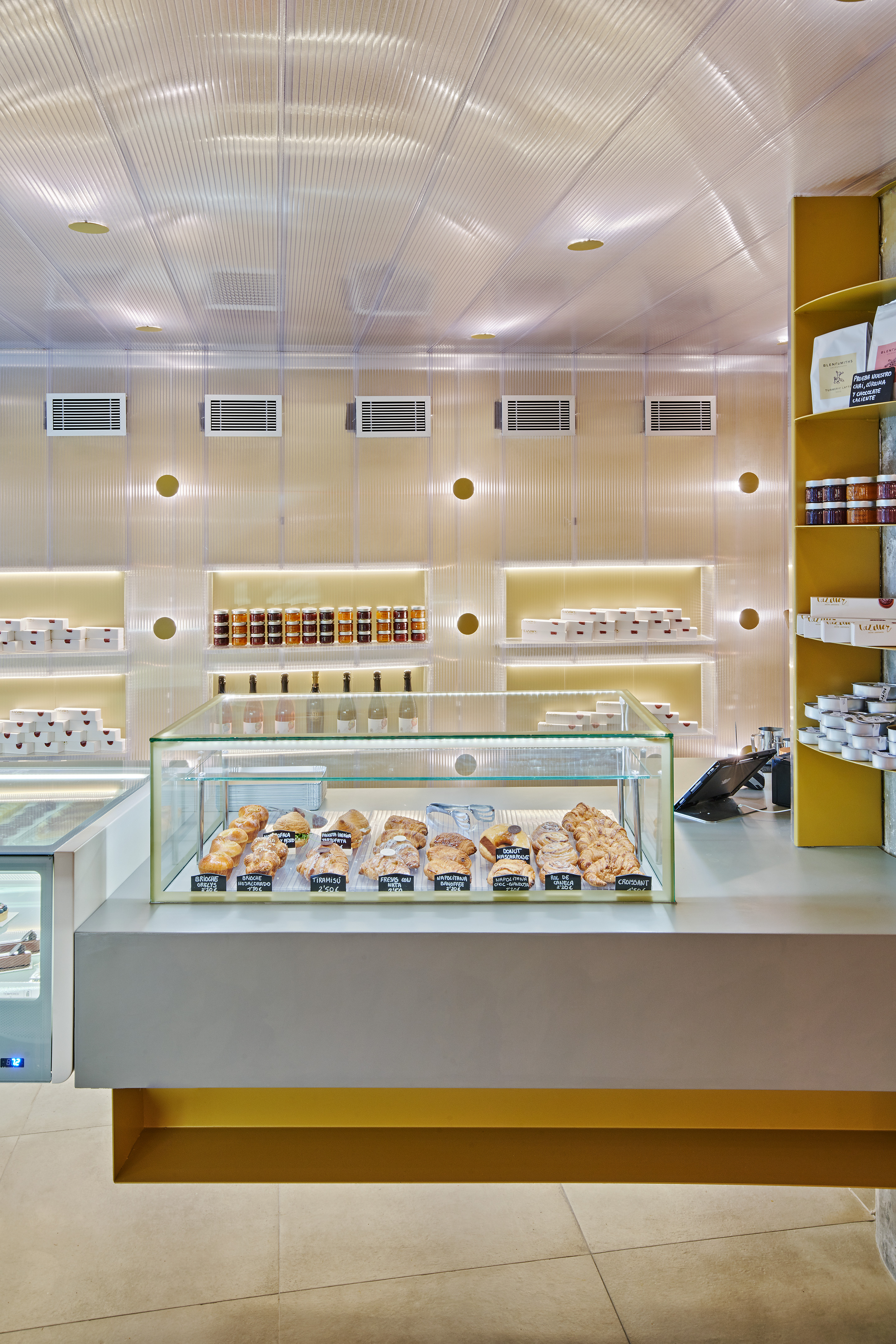
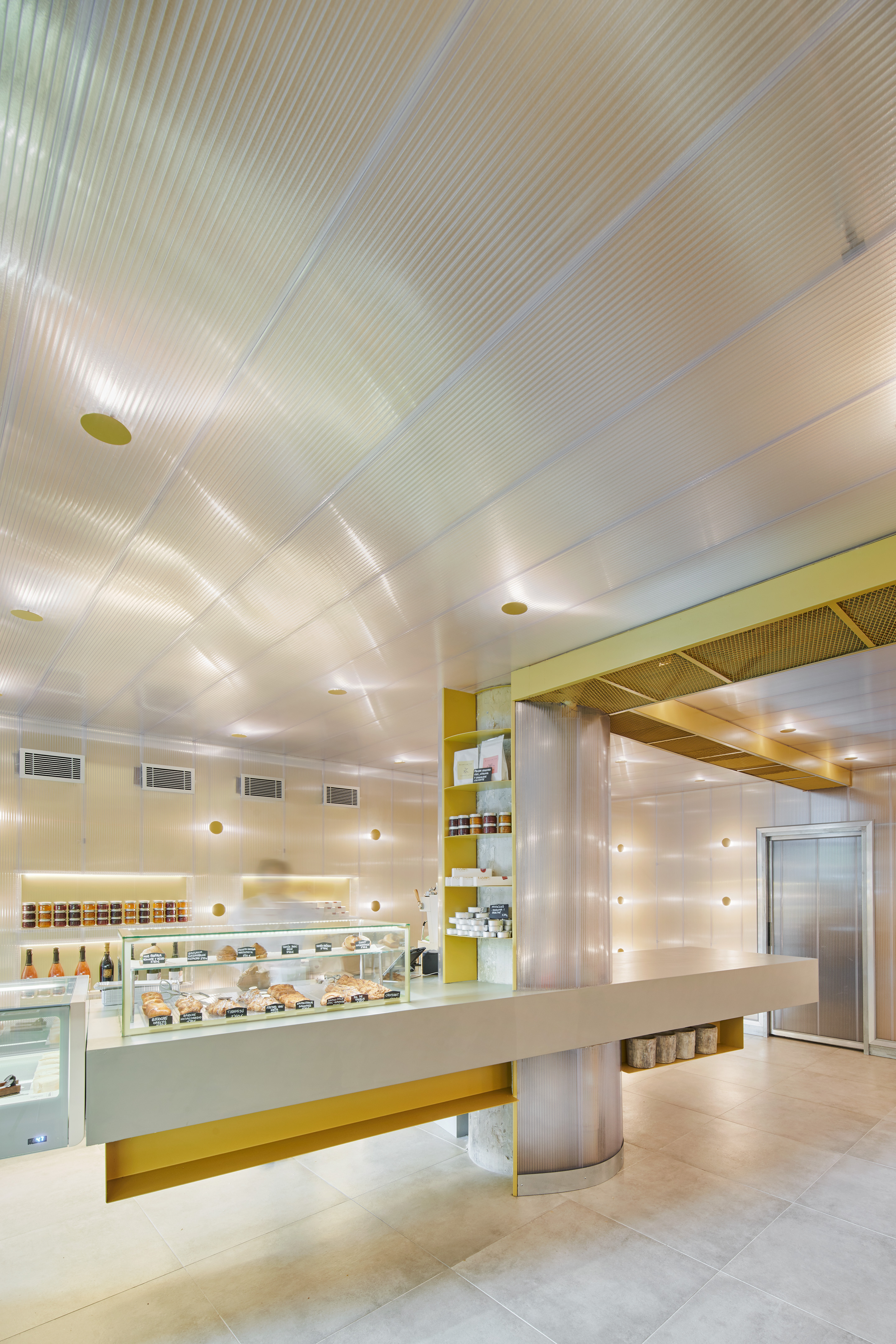
Por último, nos quedaba dar respuesta a las necesidades de venta. Para ello, propusimos un único mueble isla de seis metros de longitud. Su fuerza radica en que no tiene apoyos, resultando un potente voladizo que nace del pilar central existente, donde vitrinas, armarios y electrodomésticos quedan escondidos tras un acabado continuo de micro cemento gris.
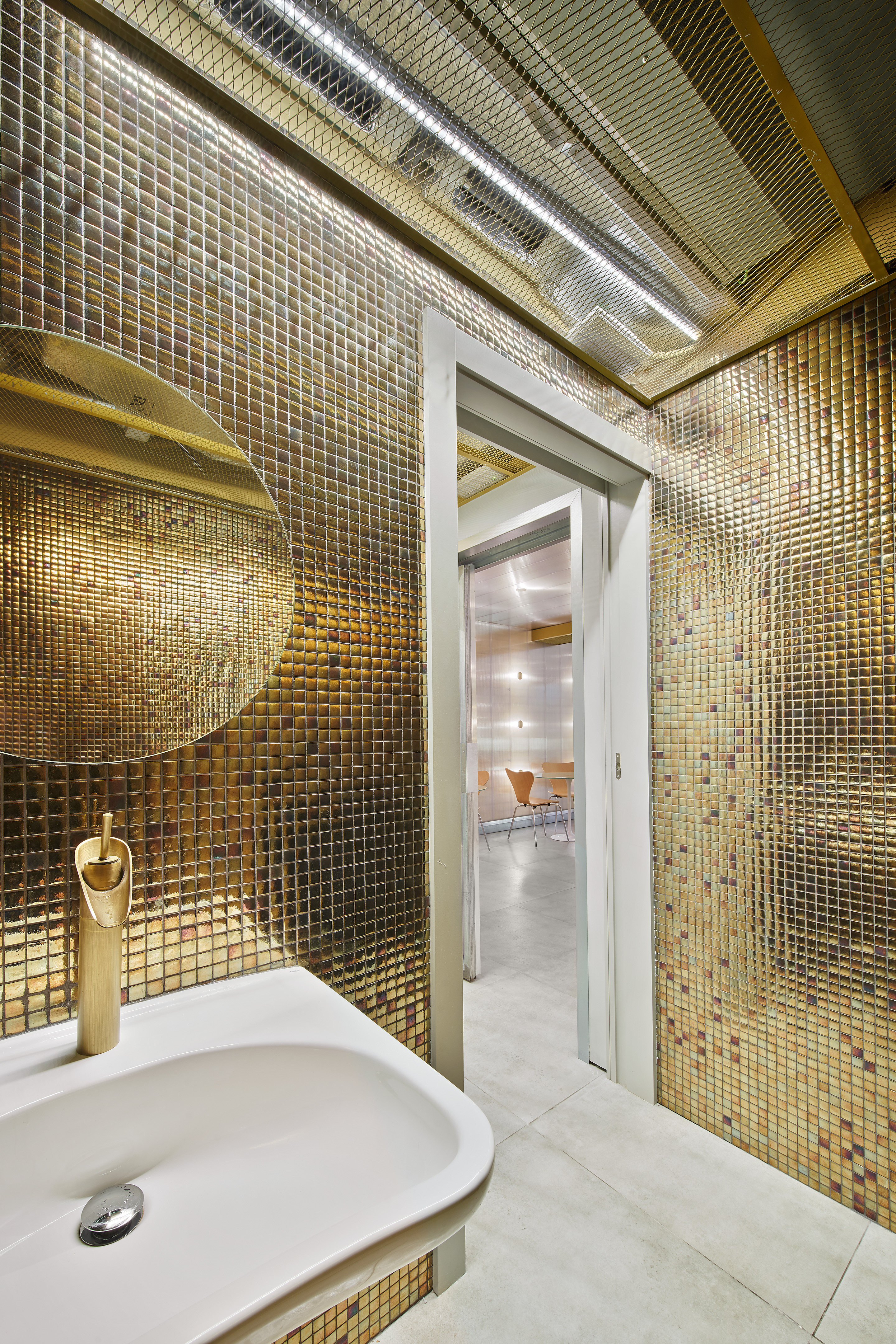
Para la zona de aseos de público se utilizó un acabado de gresite de Hisbalit en tonos dorados y ocres, elevando una zona aséptica, al mismo nivel de boutique joya.
El resultado final es un espacio sobrio, limpio y de extraordinaria potencia.

Leer entrevista a Virginia del Barco para InterSICOP
Fotografías:
©
José Hevia
Constructor: Grupo Arteco
Materiales: Villaescusa compoplast / Hisbalit
L’Atelier opened its doors in April 2019 with the objective of surprising the city of Barcelona, and it has certainly delivered. The IDEO Architectura studio was commissioned to create this concept and make it into a reality. L’Atelier – now a true jewellery case – is a space where pastry, school and bakery coexist at 140 bis Calle Viladomat.
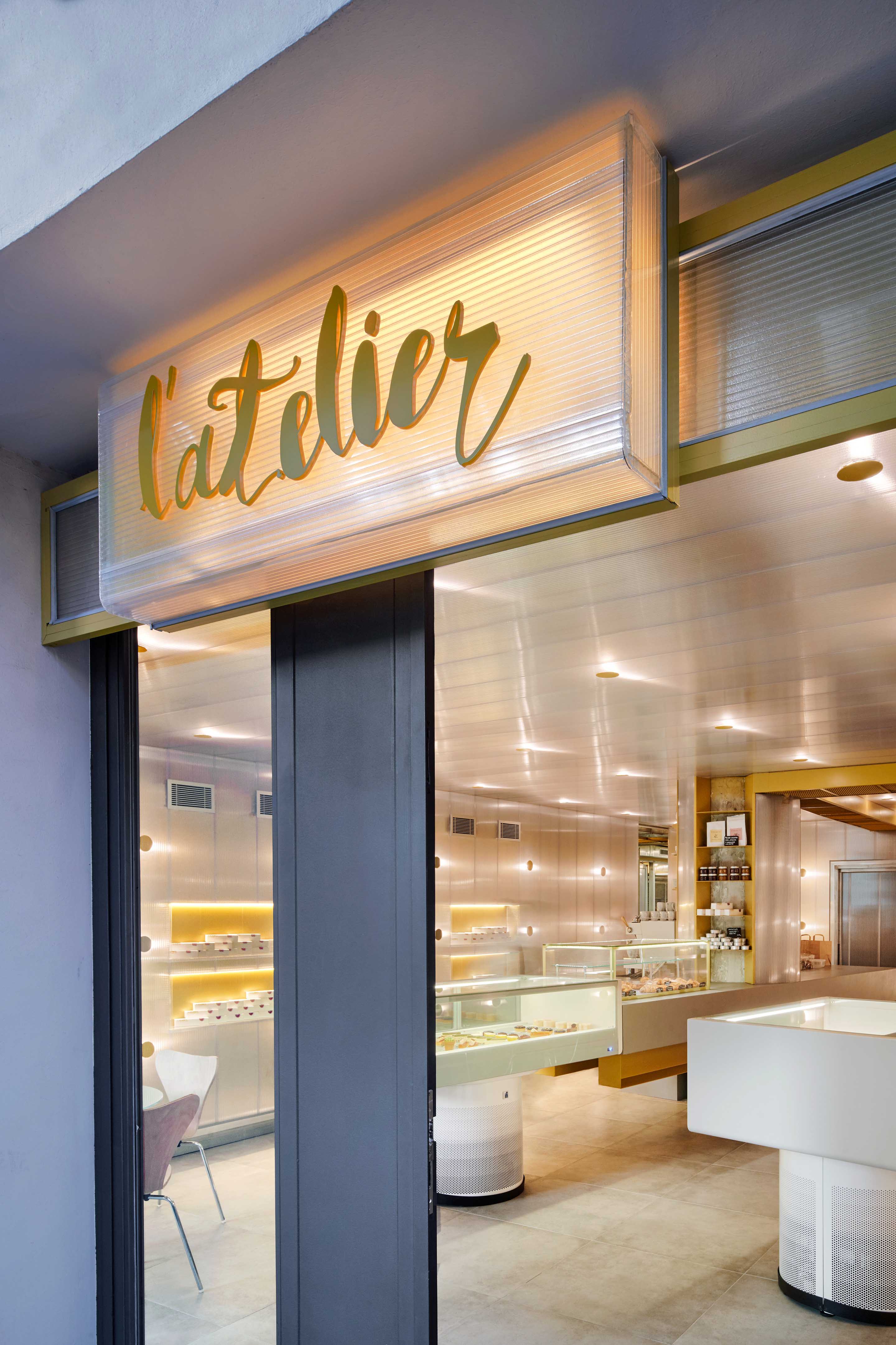

“We are looking for a groundbreaking, unique and avant-garde space”. Using his premise from Pastor, IDEO Architectura had to transform a raw area of 500 m2 in the Eixample of Barcelona into a new space destined to become a leading reference point in the bakery sector. For Virgina del Barco, the space’s architect and designer, the mission was “to generate an architectural universe that responds with clarity to the objectives set by L’Atelier, the name with which both pastry chefs present themselves to the world”.
An atelier is a laboratory made for experimentation with raw materials related to art. These workspaces are places which normally present a disordered, chaotic and magical image. Based on this concept, the team began to work on the project. “We know that both a painting, couture garment or, in our case, a pastry creation, even though they are conceived in spaces where the aesthetics of the place is secondary, are products that will be exhibited for sale in a gallery, a museum or a boutique. Aesthetics do matter to all of them because their architecture must elevate the high quality product to its highest levels of beauty and exquisiteness” adds Virginia.

THE IDEA. The name L’Atelier is a declaration of intentions in itself. Eric and Ximena want to show the world their creative universe, without hiding anything. Virginia wondered: Why not merge the apparent chaos of the workshop with the perfect harmony of the pastry boutique into a single space?
This was carried out by the team of architects, capable of giving life to a risky but captivating idea: they left the premises as they were, with their imperfections and installations in sight, and covered it with only a delicate inner skin: a layer of glass just like a jewellery case. In this way, two supposedly contrary worlds were united by a dual architectural complexion; an existing, rugged and imperfect layer, and another new, beautiful and delicate layer. The thermoclay block that forms the vertical walls, the slabs and columns of exposed concrete, wiring, pipes and downspouts are all visible. They have deliberately not been hidden. However, this bareness, somewhat hostile, faces a pure and sophisticated interior envelope. The construction of a transparent glass box, as if it were a jewellery case, separated twenty centimetres from the walls of the store, has the effect of turning any pastry creation into a small jewel framed in its showcase.

THE MATERIAL. “Building a glass box, both on the walls, floors and ceilings, was exceedingly complicated,” recalls Virginia. However, IDEO Arquitectura managed to make it work. Instead of glass, a semi-transparent polycarbonate panel thirty-three centimetres wide, that was easy to handle and shape, was used instead. This material was also employed to fashion the partitions for the pastry school. Once completed, the outcome reveals the original state of the room in a disguised and diffused manner.
THE COLOUR. IDEO Arquitectura wanted to put the final touches on the cake-jewel concept, and the selection of colour was absolutely crucial. They opted for a range of golds, finally choosing the colour PANTONE 118, ochre with golden tints, responding better to the sobriety of Eric Ortuño’s style. At the first painting phase, all of the bakery walls were painted in this colour. Then after placing the second interior polycarbonate skin, it was immediately also soaked in the same colour, reverberating the ochre-gold throughout the whole space. For the pastry school area, since the second polycarbonate skin was not placed in this part, a simpler solution was chosen. The vertical walls remained gray and only a strip on the ceiling was stained with ochre. “We did not have much height in the room and we had to expand the spatial sensation in some way, so we replaced the typical continuous plaster with a metal openwork grid. We bathed it in the same ochre colour, with the intention that the school would be captured by the spirit of the bakery.”
THE LIGHTING. The way to illuminate the space was just as important as the selection of the material. For the school, a simple but original solution was to hide the tubes of LED lights on the false gold ceiling. For the bakery, constructed as a box made with polycarbonate, achieving functionality for maintenance and access was a complex challenge. Not wanting to resort to the classic solution of continuous perimeter lighting on the floor, finally a checkerboard of equidistant spotlights was chosen and hidden behind the transparent panel.
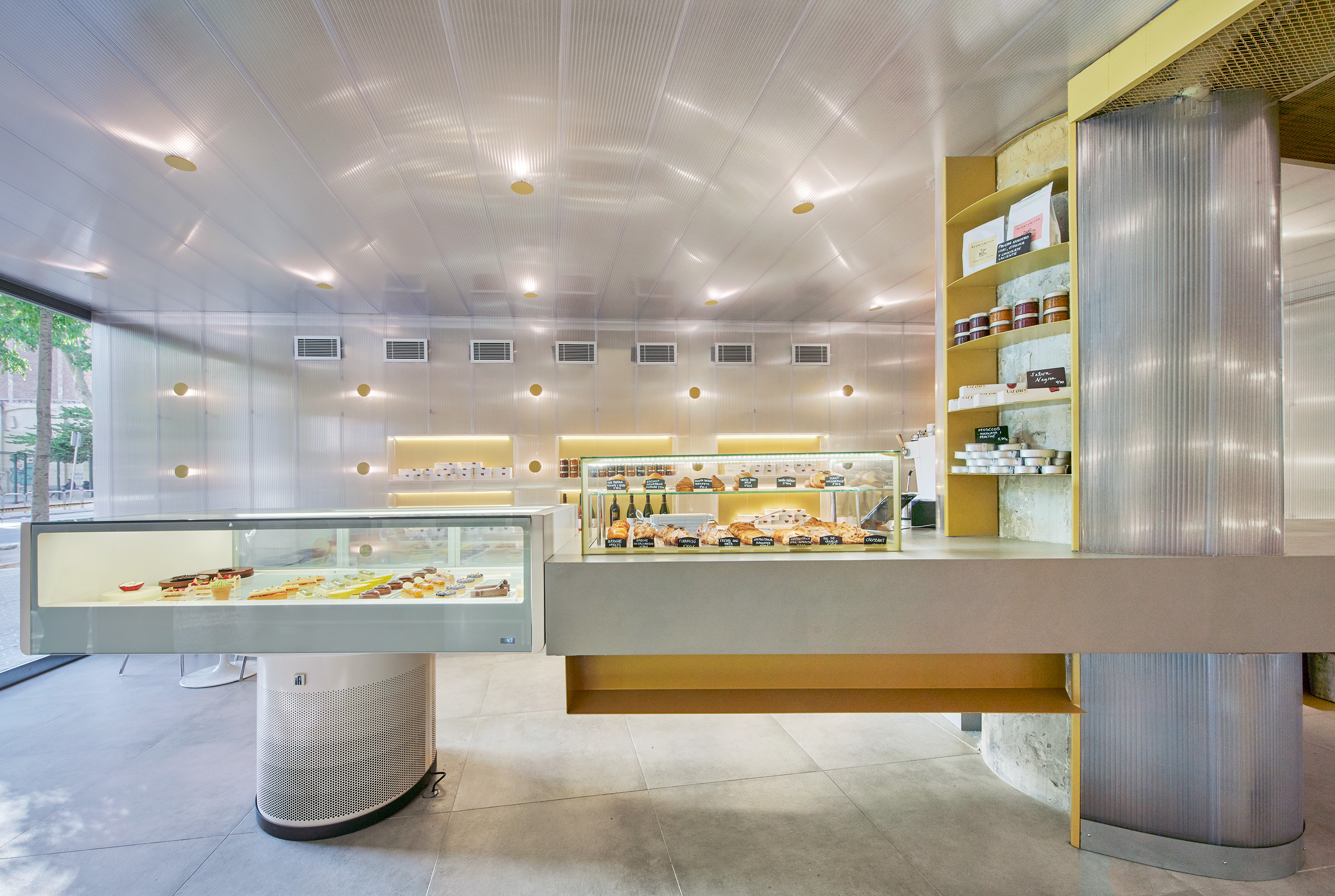
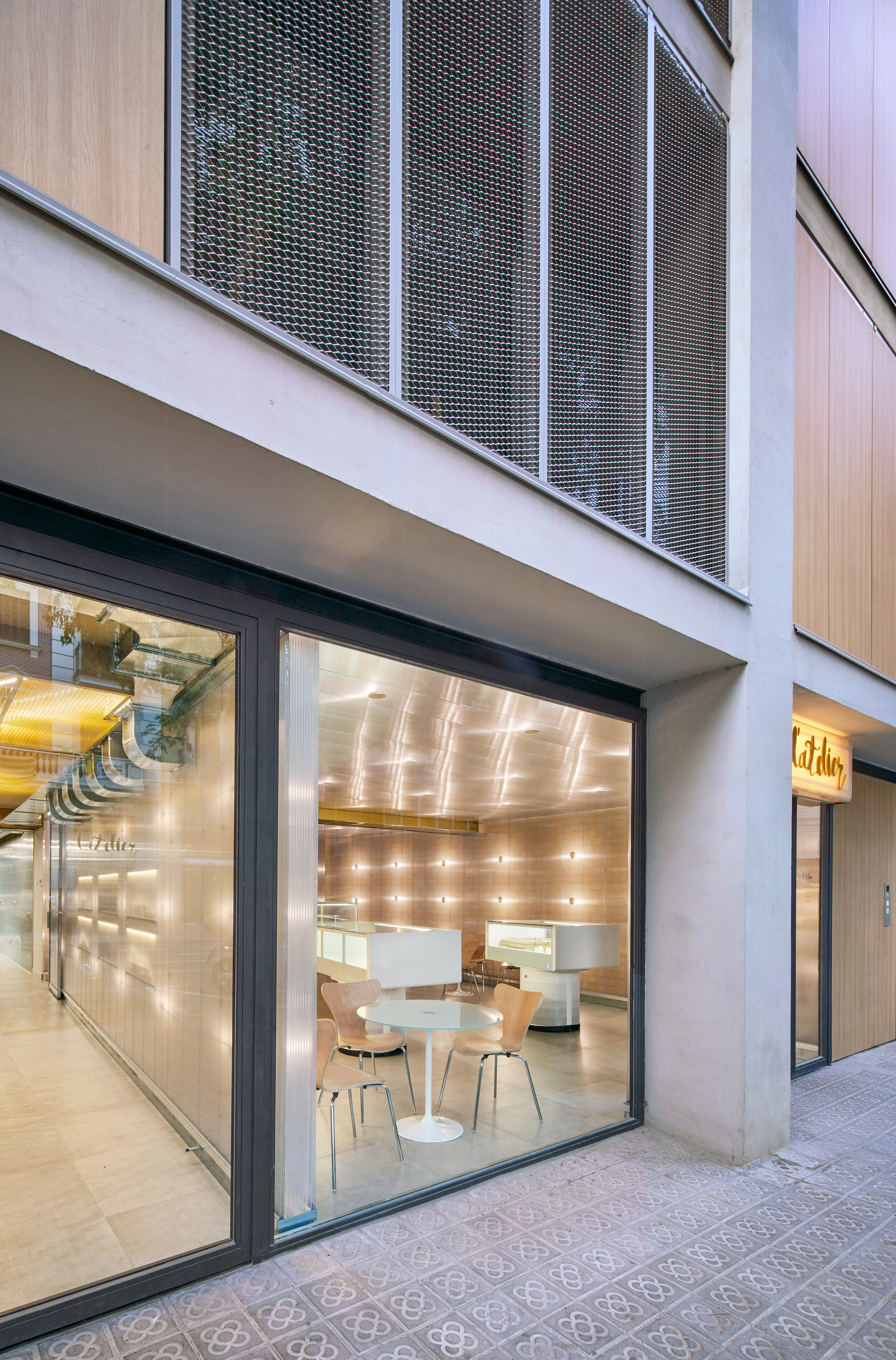
THE BUYING AND TASTING EXPERIENCE. Finally, and to respond to sales needs, IDEO Architectura proposed a unique island furniture solution, six metres in length. The key strength lies in that it has no supports, resulting in a powerful overhang that arises from a central pillar in which showcases, cabinets and appliances are hidden behind a continuous finish of gray micro cement. For the bathroom area a Hisbalit tiled finish in gold and ochre tones was used to raise the character of a sterile zone to the same level as that of the boutique-jewellery space. The final result makes L’Atelier an understated, clean space with extraordinary power. As observers, even though inside a jewellery case, through the vision of the rough walls of the premises, we will always have the origin of any artistic creation that takes place in L’Atelier in the back of our minds.


